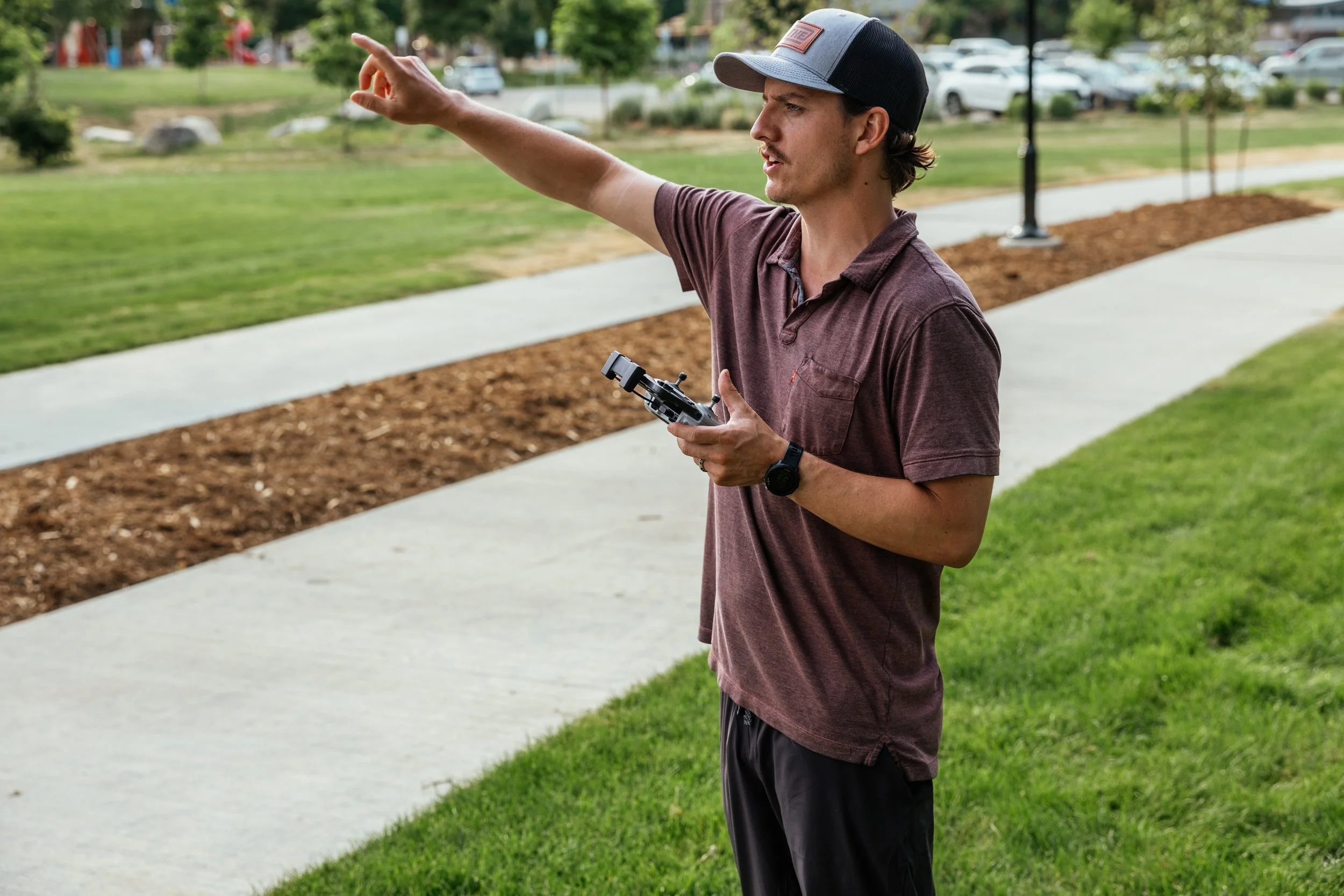The Psychology Behind High-Converting Commercials
Most people think high-converting commercials come down to the right hook, the right platform, or the right media buy. Those all matter but when you zoom out and look across the campaigns that consistently work across industries, budgets, and formats, there’s a deeper layer they all share:
They are built on an understanding of how people actually think, feel, and decide.
Conversion is not an accident. It’s the end result of dozens of small psychological cues embedded inside the story, the visuals, the structure, and even the pacing of a commercial. If you ignore those cues, you can create something beautiful that never really lands. If you use them well, you can take the same 30 seconds of screen time and make it unforgettable.
This article breaks down the psychology behind high-converting commercials, not from the perspective of a media buyer or growth marketer, but from the vantage point of a commercial director who lives at the intersection of story, behavior, and brand.
We’ll look at why people pay attention in the first place, how emotion actually shapes decision-making, and what it takes to move someone from passive viewer to active customer.
Who Am I?
As a two-time Emmy-nominated commercial director who’s spent the past decade shaping campaigns for brands like Patagonia, The North Face, The Olympics, Microsoft, and many others I’ve seen this psychological side of creative work play out again and again. The commercials that convert are aimed at to understand people. They tap into the emotions, identity cues, and behavioral patterns that actually drive decisions. That’s the lens I bring to every project, and if your brand is looking to create work that goes deeper than aesthetics and truly resonates with your audience, I’d love to connect and see how we can build something meaningful together.
Why Psychology Matters More Than Ever
The average person sees thousands of marketing messages a day. Most of them don’t even register as conscious thoughts anymore they’re just background noise. That means the first job of any commercial is to get noticed, not to sell.
This is where psychology comes in. High-converting commercials are built around a few core realities:
People make decisions emotionally first and rationally second.
Attention is scarce, and the brain is wired to ignore most things.
Familiar patterns feel safe; surprising details create memory.
We buy to protect or project identity, not just to solve problems.
Great creative doesn’t fight these truths. It works with them.
Here’s How to Get and Keep Attention
You can’t convert someone who never paid attention in the first place.
1. The Brain Is a Filters-First Machine
From a psychological perspective, the brain is always scanning for:
Threats
Opportunities
Social cues
Novelty
Everything else gets filtered out. That’s why so many high-performing commercials quickly establish relevance in the first three seconds. They show a familiar situation (“That looks like me”), a strong emotion (“I’ve felt that”), or a clear problem (“Oh yeah, I deal with that all the time”).
A gorgeous slow build might work in a film festival but, in a feed, it just loses people.
2. Pattern Interrupts
The idea of a “pattern interrupt” is simple:
Our brains tune out anything that feels predictable. To get someone’s attention, you break the pattern they expect.
In commercials, that can look like:
An unexpected line of dialogue
A quiet moment where everyone (or everything) else is loud
A visual twist that subverts a cliché
A cut that jumps somewhere we weren’t expecting
It’s easy to think we need gimmicks to keep people’ attention but we really just need one moment early on where the viewer’s brain goes, “Wait… what is this?” That micro-jolt is often what buys you the next 10–15 seconds of attention and that’s where the commercial starts to work.
Emotion - The Real Engine of Conversion
One of the most misunderstood aspects of commercial work is the relationship between emotion and action.
Marketers will often say “emotion drives purchase,” but it’s more accurate to say:
Emotion shapes how we perceive value, how we remember a brand, and how we justify decisions to ourselves later.
1. We Decide, Then We Explain
Behavioral economists and psychologists have repeatedly found that people often decide first based on an emotional pull, then use logic afterward to justify their decision.
That’s why commercials that lead only with facts like “20% off,” “now with 30% more xyz,” “faster than the competition” may inform audiences, but don’t necessarily convert at scale.
Emotion does the heavy lifting. Logic cleans it up.
2. The Emotional Palette of High-Converting Ads
Most high-converting commercials don’t rely on a single emotional note. They work like a small emotional arc.
Common emotional “engines” in performance campaigns include:
Relief – from stress, confusion, or pain
Belonging – feeling seen, included, or part of a tribe
Aspiration – becoming more of who we want to be
Reassurance – knowing we’re making a good, safe choice
Delight – surprise, humor, or joy
On paper, that can sound theoretical. In practice, it’s extremely practical:
A financial brand that shows relief when a parent finally gets clarity on their money.
A running shoe commercial that emphasizes belonging in a local community, not just performance metrics.
A wellness brand that focuses on reassurance - “you’re not broken, you’re doing your best, and this helps.”
High-converting commercials are very clear about which emotional lever they’re pulling and whether that emotion aligns with the brand’s identity.
Identity - Who We Think We Are (and Who We Want to Be)
Conversions often come from aligning with identity.
Outdoor, lifestyle, and sports campaigns show this really clearly. People aren’t really buying for the features of their sports equipment or apparel, they’re buying to express something about themselves:
“I’m the kind of person who cares about the planet.”
“I’m someone who shows up for my friends.”
“I’m someone who pushes myself.”
“I’m someone who cares about longevity and health.”
A high-converting commercial simply answers the question:
“What kind of person uses this?”
And then makes the viewer think, “I want to be that person” or “That already feels like me.”
1. Social Proof & Belonging
Social proof is one of the most powerful psychological tools in commercial work. Seeing people “like us” using a product or living a lifestyle sends a strong, implicit message:
“This is normal. This is for people like you.”
That’s why representation, casting, and context matter so much. When brands only show one narrow vision of who uses their product, they narrow their potential audience’s sense of identity too.
When you intentionally show a more diverse, thoughtful view of who belongs in your brand’s world, you expand the number of people who can picture themselves there. That often leads directly to stronger performance, because you’ve widened the identity bridge.
2. Self-Consistency
Humans love continuity. Once we adopt a certain self-story like “I’m a runner,” “I’m a good parent,” “I’m environmentally conscious” we tend to make decisions that keep that story intact.
High-converting commercials don’t ask someone to become a totally different person. They offer them a way to be more of who they already believe they are.
Think of the difference between:
“Buy this jacket, it’s technical.”
vs.“You already care about getting outside in any weather. This helps you do it more often, with less friction.”
Same product. Different psychological message.
Story Structure - Why Certain Stories Sell Better
Underneath the visuals and scripts, many high-performing commercials share a simple psychological backbone:
Recognition - “That looks like me / my problem.”
Tension - “This isn’t working / it’s frustrating / something feels off.”
Shift - “There’s a new way / new perspective / new tool.”
Resolution - “Life feels better / simpler / more aligned now.”
This mirrors how our brains like to process information: we latch onto something familiar, notice a tension, pay attention to the moment of change, and then mentally rehearse what life would be like on the other side.
Story structure in commercials isn’t as complex as long-form narratives, it mostly comes out to:
Keeping dopamine and curiosity high
Making a product feel relevant
Letting the viewer simulate the benefit in their own head
When someone has mentally “tried on” the story of your product making their life better, you’re halfway to conversion before they ever hit the landing page.
Designing Hooks That Work With the Brain (Not Against It)
If attention is the gateway to conversion, then the hook is the person standing at the door.
A hook isn’t just a clever line. It’s a moment designed around how the brain scans information in the first seconds:
Is this about me?
Is this relevant right now?
Is this different from what I’ve already seen?
High-converting commercials usually do one (or more) of these things very fast:
1. Name the Situation
Opening on a moment your audience deeply recognizes is a psychological shortcut to relevance.
A parent sneaking in a workout before the kids wake up
A runner hitting snooze on their alarm
Someone staring at a screen full of confusing numbers
The brain loves familiarity. When viewers see their own reality reflected back to them, they lean in.
2. Name the Tension
You can also open on the relatable friction.
You know that feeling when you’re 5 miles from the trailhead and your rain jacket starts leaking?
You’ve tried to fix your [problem] with [obvious solution], and it still hasn’t worked.
This taps directly into problem recognition. Once the brain says, “Yes, that’s true for me,” you’ve earned more attention.
3. Break the Expected Pattern
Sometimes the hook is a quiet, odd, or visually surprising moment:
No music when people expect a big soundtrack
A shot that lingers a beat longer than feels comfortable (often used in comedy commercials)
A gentle, self-aware whisper instead of hype, shouted delivery of the punchline.
The goal is not shock for its own sake. It’s to wake the brain up just enough to notice, “This isn’t like the other ads I’ve seen.”
The Power of Contrast and Specificity
Two of the most underrated psychological tools in commercial work are contrast and specificity.
1. Contrast: Before vs. After
Our brains don’t remember absolute states very well. We remember differences.
That’s why high-converting commercials often show:
Before / after
Hard / easy
Confusing / clear
Isolated / connected
Stressed / relieved
This doesn’t always need to be literal split screens. In outdoor and lifestyle work, it might be:
The chaos of a rushed morning vs. the calm of a pre-dawn trail run
The anxiety of gear that fails vs. the ease of gear that does what it’s supposed to
The viewer may never say it out loud, but internally they’re processing:
“My life could feel more like the second version.”
That small shift in imagination is where conversion starts.
2. Specificity: Details Make It Real
Vague stories are emotionally safe, but they’re forgettable. The brain loves concrete detail.
Not “a runner,” but “a nurse who trains at dusk after a 12-hour shift.”
Not “a busy parent,” but “a dad folding laundry on the floor while his kid builds a fort behind him.”
Specific details act like anchors: they give the brain something to hold on to. They also signal truthfulness, which builds trust.
When someone sees specific, textured moments on screen, they’re more likely to believe the underlying promise.
Using Scarcity, Urgency, and Trust
Scarcity (“only a few left”) and urgency (“offer ends soon”) are classic psychological triggers because they speak directly to loss aversion. Loss aversion is our tendency to fear losses more than we value gains.
Used well, they can nudge someone who’s already interested to finally act.
Used poorly, they create skepticism and erode brand trust.
When Scarcity Helps
Scarcity works best when it’s:
True (limited run, seasonal product, small-batch, enrollment window)
Relevant (the thing is actually worth acting quickly on)
Aligned with brand (a high-end, craft-oriented brand feels more credible being limited than a mass commodity brand)
For example, an outdoor brand with a small run of a collab jacket can reasonably say:
“We made 500 of these for this season. When they’re gone, they’re gone.”
That’s honest and it respects the audience’s intelligence, not giving a false sense of scarcity.
When Scarcity Hurts
If every single ad screams urgency, the audience adapts. They stop believing you.
From a psychological perspective, overused scarcity cues flip from motivator to noise. People feel manipulated instead of supported.
High-converting commercials for brands with long-term ambitions tend to use urgency sparingly and truthfully. They trust the emotional and identity fit to do most of the heavy lifting.
Memory, Repetition, and Distinctiveness
Once a commercial has captured attention, created emotion, and made a case, there’s still one more hurdle:
Will anyone remember it?
Psychologically, memory thrives on two things:
Repetition
Distinctiveness
1. Repetition (Without Being Boring)
Repetition doesn’t have to mean saying the same tagline five times in a row. It can mean:
Repeating a visual motif (same color, texture, or framing)
Repeating a simple phrase that encapsulates the belief
Repeating a behavior (the way someone laces shoes, zips a jacket, steps into a scene)
By the time the spot ends, the viewer has quietly absorbed the core idea through multiple sensory channels.
2. Distinctiveness: The “Ownable” Element
Distinctiveness is what makes your commercial feel like you and not every other brand in your category.
That might be:
A specific tone of voice (gentle, wry, earnest, poetic)
A recurring type of character
A specific way of framing outdoor scenes
A branded color or typography used consistently
From a psychological angle, distinctiveness gives the brain a labeled folder to file you into. Instead of “some outdoor brand,” you become, “Oh yeah, the brand that…”
High-converting campaigns go way further than view counts and click through rate anayltics. They become easier to recognize and recall the next time someone sees your name, which is often the most powerful lever for your business.
Bringing It All Together as a Commercial Director
If you’re a brand hiring a director, this is where psychology becomes practical.
High-converting commercials don’t happen by slapping a CTA on a beautiful edit. They’re built from the ground up around how people think, feel, and decide.
If you’re looking for a commercial director, that means you should look for someone who:
1. Starts With the Humanity, Not the Product
Instead of asking, “How do we show this thing?”, the director asks:
Who is this for?
What do they believe about themselves?
What tension are they living in?
What emotion do they want more of?
Everything else cascades from there.
2. Build Stories Around Emotional & Identity Levers
You want the director to consciously choose:
Which emotion is driving this spot
What identity you’re affirming or inviting people into
Where the contrast lies (before vs. after, stuck vs. unstuck)
The director is designing a small psychological journey, and using storytelling techniques to do that.
3. Directs for Micro-Moments
A director should craft moments that feel like something:
The comedic pause before someone answers a question
The exhale after a long climb
The way someone’s hands fidget when they talk about what matters to them
Those little beats are what make an ad feel human, which is why they’re often what convert.
4. Collaborates With Strategy and Media (Not After the Fact)
Because a director understand audience psychology, they shouldn’t treat the edit as the end of the journey. A successful commercial director thinks:
How will this hook play in a 6-second version?
What’s the key emotion we need intact in every cutdown?
How do we maintain the same identity message across platforms?
That’s how you create campaigns instead of isolated videos.
Why This Matters for Brands Long-Term
The psychology behind high-converting commercials isn’t just about squeezing a few extra percentage points out of a campaign. It’s about the kind of relationship you build with your audience over time.
When you respect how people think and feel:
You stop yelling and start connecting.
You stop pushing products and start inviting people into a story.
You stop chasing quick hacks and start building a brand that people remember.
High-converting commercials aren’t magic tricks. They’re what happens when strategy, story, and psychology line up.
If you’re a brand looking to make work that actually lands, not just looks good in a deck, you don’t just need a director who can frame a pretty shot.
You need one who understands how people work.
I’ve spent the past decade helping outdoor, lifestyle, and mission-driven brands turn strategy and story into commercials that resonate and convert.
If you’re ready to create a video that feels true to your audience, reflects the heart of your brand, and actually drives results, I’d love to help you bring it to life.
Reach out, share what you’re building, and let’s explore how we can make something memorable together.










